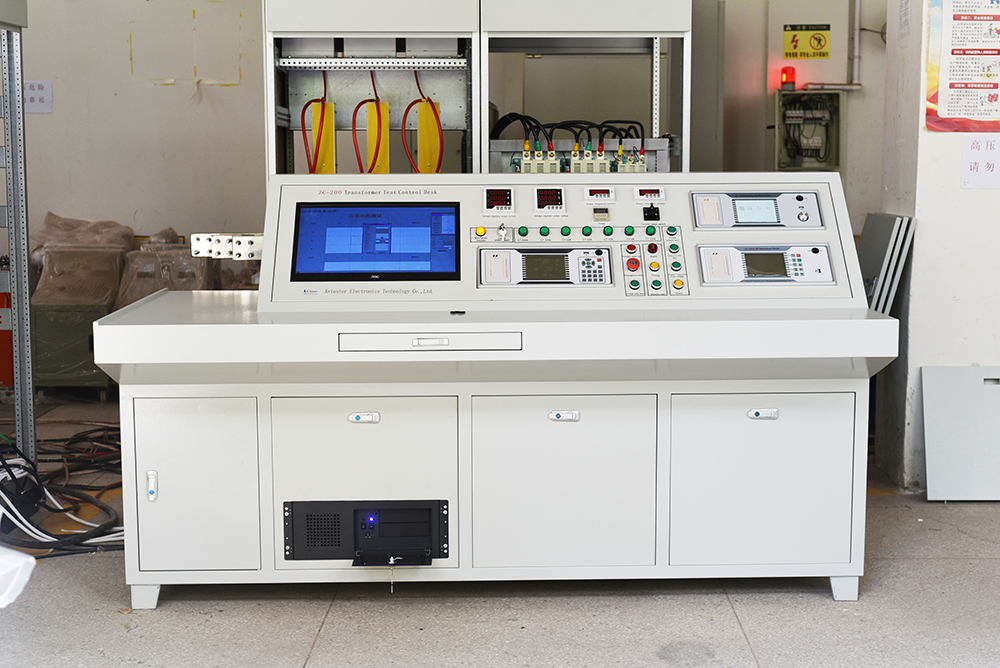Selection, configuration and operation points of transformer comprehensive test bench
1. Key selection points
① Matching testing scope with requirements:
Select a test bench with corresponding testing functions based on the type of transformer that needs to be tested (such as oil immersed, dry-type, etc.) and the testing items (such as no-load test, short-circuit test, transformer ratio test, etc.).
Consider the requirements for testing voltage, current, and capacity to ensure that the test bench can meet the highest testing requirements of the tested transformer. For example, for high-voltage transformers, a test bench with wide bandwidth and high precision should be selected.
② Testing accuracy and stability:
Accuracy is one of the important criteria for selecting a test bench, and a high-precision test bench can more accurately reflect the performance parameters of the transformer.
Stability is also important to ensure the accuracy and reproducibility of test results over a long period of time or multiple tests.
③ Automation level and operational convenience:
A highly automated testing platform can reduce manual operations and improve testing efficiency.
The operating interface should be user-friendly, easy for operators to quickly get started, and reduce the possibility of misoperation.
④ Safety and reliability:
The test bench should have comprehensive safety protection measures, such as overcurrent protection, overvoltage protection, etc., to ensure that personnel and equipment are not damaged during the testing process.
Choose well-known brands and certified test benches to ensure their reliability and stability.
2. Configuration points
① Main testing equipment:
Including but not limited to high voltage generators, low voltage power supplies, current and voltage meters, power meters, transformation ratio testers, etc.
These devices should have high precision and stability to meet testing requirements.
② Auxiliary equipment:
When connecting cables, fixtures, grounding devices, etc., it should be ensured that they are safe and reliable, and can be easily connected to the test bench and the tested transformer.
③ Software system:
Equipped with advanced testing software, it can automatically collect, process, and analyze test data.
The software interface should be intuitive and user-friendly, capable of generating detailed test reports for subsequent data analysis and archive management.
3. Operation points
① Preparation work:
Before testing, carefully read the user manual of the test bench to understand its various functions and operational requirements.
Check if the connection between the test bench and the tested transformer is correct, ensuring that there are no short circuits or open circuits.
Check whether the various security protection measures of the test bench are intact and effective.
② Testing process:
Operate according to the user manual of the test bench and proceed with each testing item in sequence.
During the testing process, close attention should be paid to the status of the test bench and the tested transformer. If there are any abnormal situations, the testing should be stopped immediately and the cause should be identified.
Ensure the accuracy and completeness of test data, record and save test data in a timely manner.
③ Data processing and analysis:
Use testing software to process and analyze test data, and generate detailed test reports.
Carefully review the test report, analyze whether the test results meet the expected requirements, and if there are any abnormalities, identify the cause and take corresponding measures.
④ Maintenance and upkeep:
After the test is completed, the test bench should be cleaned and maintained in a timely manner to ensure that it is in good working condition.
Regularly calibrate and inspect the test bench to ensure its accuracy and stability meet the requirements.
Through the detailed explanation of the selection, configuration, and operation points above, we hope to help users better choose and use the transformer comprehensive test bench, ensuring the accuracy and reliability of the test results.

The ZC-200 transformer comprehensive test system is mainly used for testing the no-load characteristics, load characteristics, winding resistance, transformation ratio group, power frequency withstand voltage, induction withstand voltage, insulation resistance of power transformers and distribution transformers. The system adopts a modular design, where each testing unit can work independently and can be automatically tested under computer control. The test data of each project can be directly obtained by the computer and can form test reports. This system avoids random errors caused by manual observation and recording of data, and greatly improves experimental efficiency.
Kvtester Electronics Technology Co.,Ltd. is a high-tech enterprise specializing in power testing, testing, research and development, production, and sales of testing equipment. It has been engaged in the electrical testing industry for many years, and its products are of high quality. We welcome customers to come and purchase. Service hotline: 0086-27-81778799, to learn more, visit the official website: www.kvtester.com





